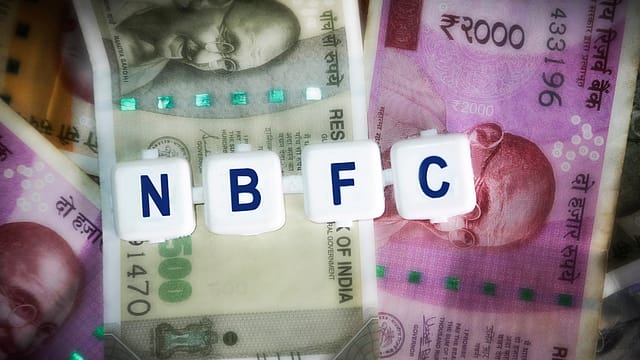NBFCs' AUM to grow 13-14% next fiscal: CRISIL
ADVERTISEMENT

Non-banking financial companies (NBFCs) are expected to grow their assets under management (AUM) 13-14% next fiscal, or twice the 7% pace logged last fiscal as robust credit demand piggybacks the ongoing economic rebound, according to CRISIL Ratings.
“Stronger balance sheets with higher provisioning and lower leverage, receding asset-quality concerns and steadily normalising funding access provide a solid foundation for NBFCs to capitalise on credit demand,” says Gurpreet Chhatwal, managing director, CRISIL Ratings.
Chhatwal, however, says that competition from banks will remain intense and the rising interest rate environment will exert pressure on margins and limit competitive ability, especially in the largest traditional segments of home loans and new vehicle finance.
“Diversification into higher-yielding segments such as unsecured loans, used-vehicle loans, and secured SME loans will be the focus areas for the larger NBFCs,” Chhatwal adds.
In home loans, the biggest segment comprising 40-45% of the NBFC AUM, structural factors driving end-user housing demand are intact despite the impact of rising real estate prices and interest rates, the rating agency says, adding that should drive 13-15% growth in the segment next fiscal.
Yet, housing finance companies could keep losing market share to banks amid intense competition on interest rates, especially in the urban and the formal salaried segments, says CRISIL Ratings.
January 2026
Netflix, which has been in India for a decade, has successfully struck a balance between high-class premium content and pricing that attracts a range of customers. Find out how the U.S. streaming giant evolved in India, plus an exclusive interview with CEO Ted Sarandos. Also read about the Best Investments for 2026, and how rising growth and easing inflation will come in handy for finance minister Nirmala Sitharaman as she prepares Budget 2026.
Rising rates will also lift the borrowing cost of NBFCs and lower their competitiveness versus banks, which have access to lower cost funds, it adds.
Vehicle finance, the second-largest segment that comprises 20-25% of NBFC AUM, will grow 13-14% next fiscal compared with an estimated around 12% this fiscal on the back of solid underlying-asset sales, the rating agency says.
“Strong pent-up demand and new launches will continue to drive car and utility vehicle sales. The ongoing rebound in economic activity, demand for fleet replacement, and focus on last-mile connectivity will support commercial vehicle sales. In the new-vehicle finance segment, especially cars, interest-rate sensitivity of borrowers is high so competition from banks remains tough given their ability to offer finer pricing,” says CRISIL.
NBFCs are expected to capitalise on their core strengths of last-mile connectivity, customer relationships, innovativeness and strong understanding of micro markets to sharpen focus on used-vehicle financing, which offers higher yields and better profitability from a risk-adjusted return perspective, it adds.
Disbursements of unsecured loan, which comprises 8-10% of NBFC AUM, doubled on-year last fiscal and grew further by around 50% in the first half of this fiscal. Demand for consumer loans is high across durables, travel and other personal consumption activities, while business loans have benefited from macroeconomic tailwinds. The AUM in this segment is seen growing 20-22% next fiscal.
“As large NBFCs turn towards non-traditional segments to enhance yields, we are likely to see more partnerships such as co-lending with emerging NBFCs focusing on specific asset classes, especially unsecured loans. This allows the large NBFCs to expand to newer domains in a more cost-efficient manner while reducing time-to-market. For emerging NBFCs, this supports capital-efficient AUM growth,” says Krishnan Sitaraman, senior director and deputy chief ratings officer, CRISIL Ratings.
